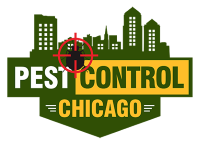Getting The Pest Control Chicago To Work
Getting The Pest Control Chicago To Work
Blog Article
Everything about Pest Control Chicago
Table of ContentsThe smart Trick of Pest Control Chicago That Nobody is Talking AboutSome Of Pest Control ChicagoThe Greatest Guide To Pest Control ChicagoTop Guidelines Of Pest Control ChicagoThe Definitive Guide for Pest Control ChicagoAn Unbiased View of Pest Control Chicago
Growing or harvesting a crop before (or after) an insect exists decreases insect damage by avoidance. Capturing and determining a pest's growing degree days can assist with preparing around a bug's lifecycle. Damages resistance can often be attained by growing a plant early to ensure that the plants are more powerful, more immune, and a lot more tolerant to damages by the time insect bugs exist.
By producing a little, controlled room that the insects choose, it is feasible to divert parasites far from the key plant. Two techniques for this are catch cropping and strip harvesting. is planting a favored host plant of an insect parasite near the primary plant that is to be protected.
If necessary, the pests can then be killed in the catch plant. Catch plants can be any species that the bug preferseven be the same types as the key crop - Pest treatment professionals in Chicago. If the trap crop is the exact same types as the primary crop, it must be grown at a time that will best tempt the insect far from the main crop
The Basic Principles Of Pest Control Chicago
 This technique is valuable when collecting a trap crop because it keeps some environment for the bug. Because of this, the bug does stagnate to locate new habitat in a surrounding higher worth or more at risk crop. https://www.awwwards.com/pstc0ntrlchg/. The techniques already discussed emphasis on reducing crop exposure to insect pests, yet it is additionally feasible to minimize return loss also when insect damage occurs
This technique is valuable when collecting a trap crop because it keeps some environment for the bug. Because of this, the bug does stagnate to locate new habitat in a surrounding higher worth or more at risk crop. https://www.awwwards.com/pstc0ntrlchg/. The techniques already discussed emphasis on reducing crop exposure to insect pests, yet it is additionally feasible to minimize return loss also when insect damage occursTo exercise IPM in the landscape, pick plants that are well suited to the site. Plant them correctly and maintain the plants healthy and balanced by meticulously sprinkling, fertilizing, and trimming them. Keep an eye out for troubles on your plants as they occur. If a parasite or illness causes undesirable damage despite preventative initiatives, choose an effective monitoring approach that will certainly have the least amount of influence on various other living creatures and the atmosphere.
The Main Principles Of Pest Control Chicago
 Try to find signs the plant displays as an outcome of bug task. Analyze your plants frequently. Identify your plants to ensure that the twisted leaves, unusual pigmentation, or strange-looking frameworks you see are not a typical part of the plant. Try to eliminate site-related issues by seeing to it that the soil kind, drainage conditions, fertility degree, and various other ecological conditions agree with for the plant.
Try to find signs the plant displays as an outcome of bug task. Analyze your plants frequently. Identify your plants to ensure that the twisted leaves, unusual pigmentation, or strange-looking frameworks you see are not a typical part of the plant. Try to eliminate site-related issues by seeing to it that the soil kind, drainage conditions, fertility degree, and various other ecological conditions agree with for the plant.Insects and termites often are associated with specific plants, and they follow particular advancement and habits patterns as the period advances. Use recommendation books from the collection or yard center to recognize parasites. If you can not find an accurate summary there, get in touch with somebody in your neighborhood extension office. Find out about the pest's life cycle, habits, and natural adversaries.
If so, an application of a nonselective pesticide might kill them, enabling the pest population to rebound spontaneous by killers and parasites, which might have been offering significant control. If a control is needed, take into consideration physical or biorational approaches. If they are not available or impractical, you might need to very carefully use a standard chemical control.
Getting My Pest Control Chicago To Work
 Some aphids and mites can be knocked off by splashing the plant with water. You can make use of traps to catch specific bugs, and obstacles to shield plants from insect attack or illness infection.
Some aphids and mites can be knocked off by splashing the plant with water. You can make use of traps to catch specific bugs, and obstacles to shield plants from insect attack or illness infection.In some cases, the best solution may be literally removing the plant and replacing it with one that will not be affected by the parasite or disease. The first team consists of living organisms that can eliminate the parasite.
An example of an approach that uses a normally happening biochemical is the microorganism Bacillus thuringiensis (Bt). Bt has a protein that is dangerous to certain pests, yet safe to various other organisms.
Our Pest Control Chicago Statements
When the sensitive insect pest feeds on the splashed leaves, it will consume the healthy protein and be killed. Conventional chemicals are used only as a last resort in an IPM program, yet sometimes are the most reliable ways of control. To have the best effect, these materials require to be applied on a certain part of the plant when the insect is most susceptible.
In a lot of cases, environmentally risk-free chemicals such as horticultural oil or insecticidal soap are reliable options - https://anotepad.com/notes/257phjjy. Again, applications must be timed very carefully to have the best effect on the parasite insect population. Due to the fact that they have no recurring activity after they have actually dried out, soaps and oils are generally the option that is the least turbulent to populations of useful organisms
These words, from least harmful to most harmful are: "caution," "warning," and "risk." Make use of these words as guidelines to help you select the least unsafe material amongst the efficient options. For most landscape pests, you require to take into consideration chemicals in just the very helpful site first two categories. Some pesticide solutions can be used only by applicators with special training and who are licensed by the state's department of farming.
The Of Pest Control Chicago
Describe the Woody Ornamental Insect, Mite, and Illness Administration Guide, released by Penn State Expansion, or to an additional current recommendation for a checklist of materials that are registered for use on plants in your state. Review the tag to ensure that you have actually picked an item that works against the parasite you have actually identified, and choose your timing based upon professional recommendations.
Report this page